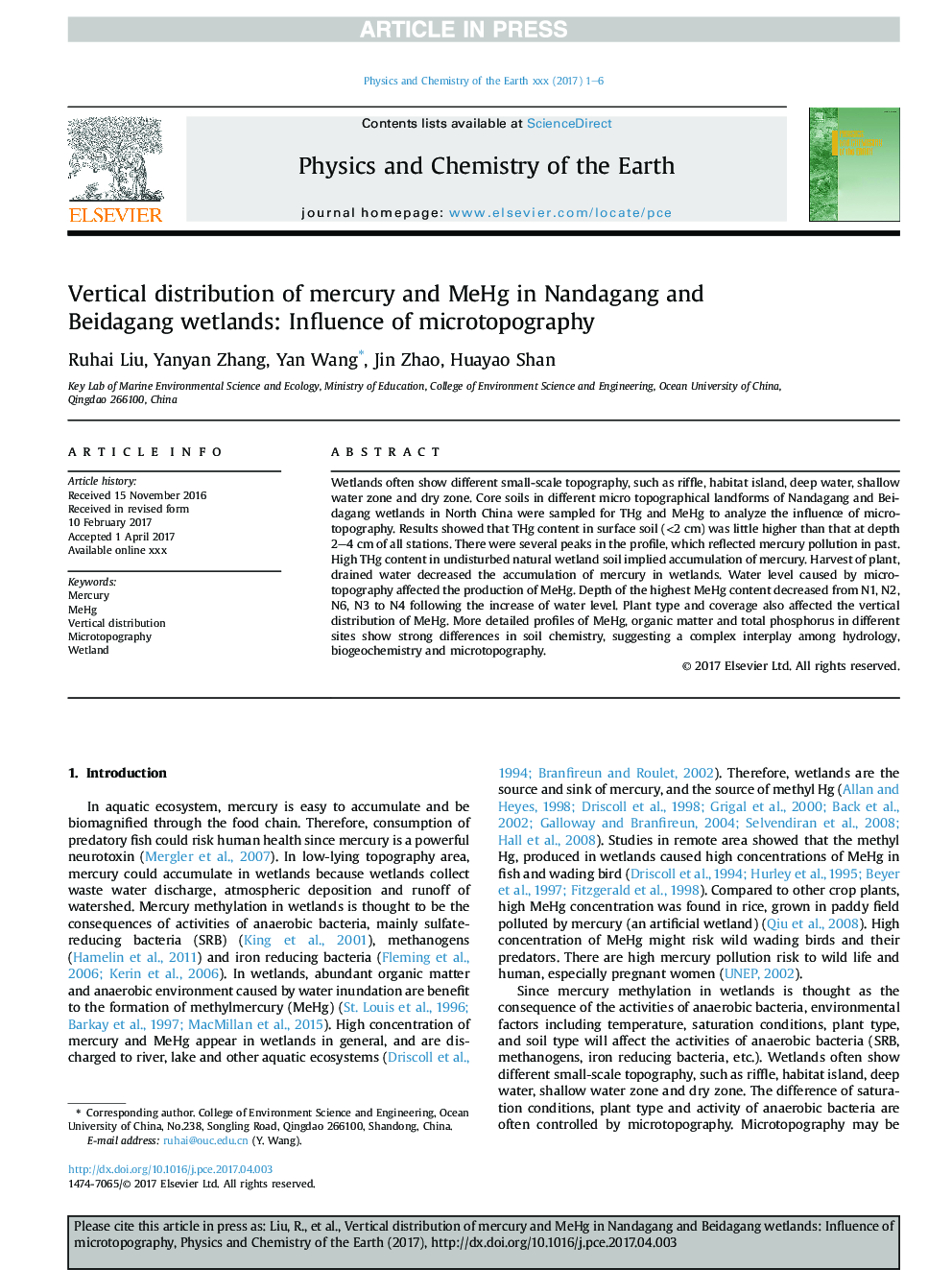| Article ID | Journal | Published Year | Pages | File Type |
|---|---|---|---|---|
| 8912396 | Physics and Chemistry of the Earth, Parts A/B/C | 2018 | 6 Pages |
Abstract
Wetlands often show different small-scale topography, such as riffle, habitat island, deep water, shallow water zone and dry zone. Core soils in different micro topographical landforms of Nandagang and Beidagang wetlands in North China were sampled for THg and MeHg to analyze the influence of microtopography. Results showed that THg content in surface soil (<2Â cm) was little higher than that at depth 2-4Â cm of all stations. There were several peaks in the profile, which reflected mercury pollution in past. High THg content in undisturbed natural wetland soil implied accumulation of mercury. Harvest of plant, drained water decreased the accumulation of mercury in wetlands. Water level caused by microtopography affected the production of MeHg. Depth of the highest MeHg content decreased from N1, N2, N6, N3 to N4 following the increase of water level. Plant type and coverage also affected the vertical distribution of MeHg. More detailed profiles of MeHg, organic matter and total phosphorus in different sites show strong differences in soil chemistry, suggesting a complex interplay among hydrology, biogeochemistry and microtopography.
Related Topics
Physical Sciences and Engineering
Earth and Planetary Sciences
Geochemistry and Petrology
Authors
Ruhai Liu, Yanyan Zhang, Yan Wang, Jin Zhao, Huayao Shan,
